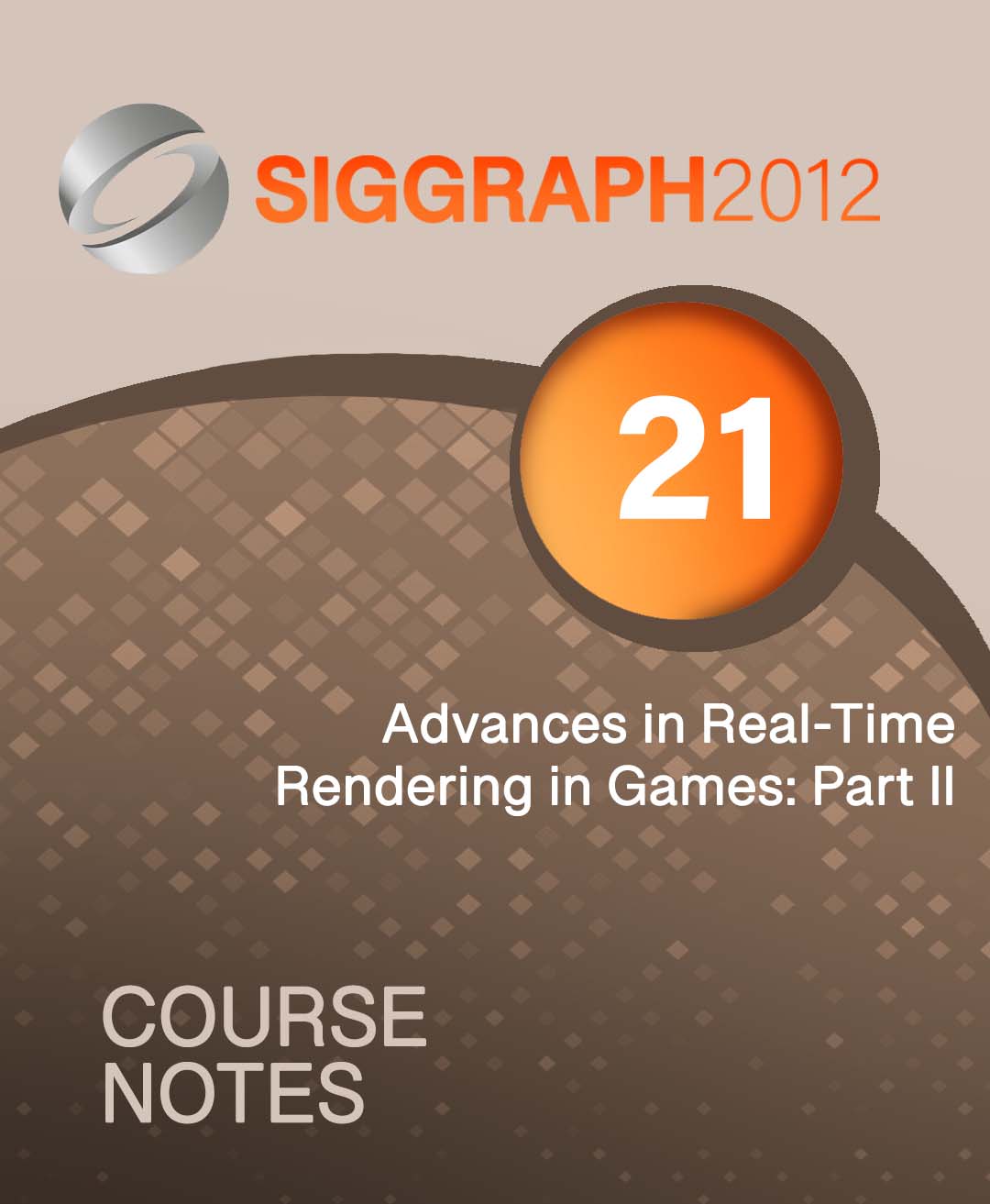“Advances in Real-Time Rendering in Games: Part II” by Tatarchuk, Mittring, Hill, Baker and Edwards
Conference:
Type(s):
Title:
- Advances in Real-Time Rendering in Games: Part II
Presenter(s)/Author(s):
Entry Number: 21
Abstract:
Prerequisites
Working knowledge of modern real-time graphics APIs like OpenGL or Direct3D and a solid basis in commonly used graphics algorithms. Familiarity with the concepts of programmable shading and shading languages.
Who Should Attend
Technical practitioners and developers of graphics engines for visualization, games, or effects rendering who are interested in interactive rendering.
Description
Advances in real-time graphics research and the ever-increasing power of mainstream GPUs and consoles continue to generate an explosion of innovative algorithms suitable for fast, interactive rendering of complex and engaging virtual worlds. Every year, the latest video games employ a vast variety of sophisticated algorithms to produce ground-breaking 3D rendering that pushes the visual boundaries and interactive experience of rich environments.
This course is the next installment in the established series of SIGGRAPH courses on real-time rendering. It summarizes the best graphics practices and research from the game-development community and provides practical and production-proven algorithms. The second part of the course includes speakers from the makers of several award-winning games, such as Epic, Ubisoft, Firaxis, and thatgamecompany, among others. The focus of the course is on the intersection between the game-development community and state-of-the-art 3D graphics research, and the potential for cross-pollination of knowledge in future games and other interactive applications.
Topics covered in this portion include practical methods of real game-rendering pipelines and shipping game engines, improvements to deferred shading and global illumination, new material models, particle rendering and simulation, post-processing pipelines, shader antialiasing, dynamic sand simulation and rendering, and other exciting production-proven techniques.





